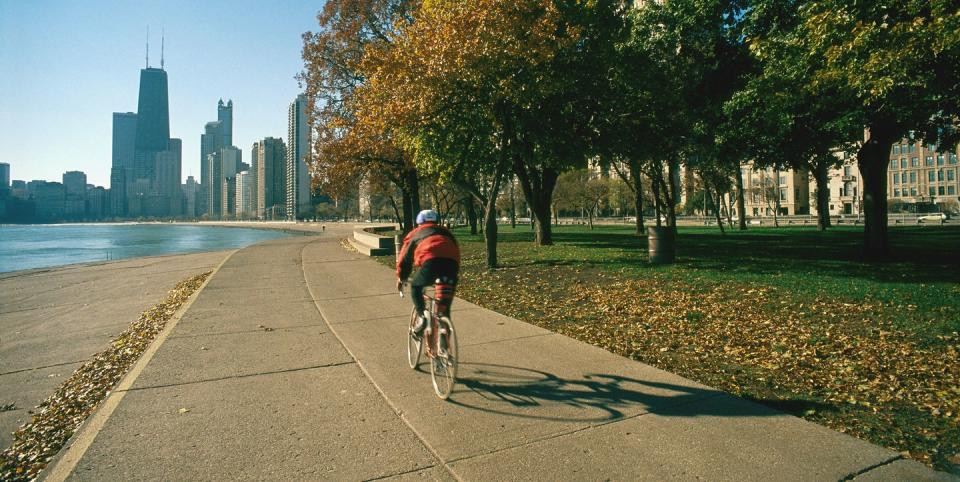Want to Live Longer? Science Says to Get Outside More

According to a recent review published in the journal Lancet Public Health, spending time in green spaces within cities can reduce your risk of early death.
Green space can reduce stress and improve mental health, which may lead to more physical activity.
More intense exercise like cycling—as opposed to just taking a stroll in a park—may further help prevent premature death.
Finding time to enjoy a city park isn’t just a pleasant lunchtime excursion—recent research suggests those outings could help you live longer.
Published in the journal Lancet Public Health, a World Health Organization review of nine major studies from seven countries—representing over 8 million people—on green spaces and all-cause mortality found that there’s a significant association between exposure to green spaces in urban areas and better public health.
Researchers found that for every 0.1 increase in green space within a third of a mile of a person’s home, there was a 4 percent reduction in premature death. This was consistent across every country, including the U.S., China, Spain, Australia, Canada, Italy, and Switzerland.
“The takeaway message here is that green space is good for health, and people living in greener areas live longer,” Mark Nieuwenhuijsen, Ph.D., review coauthor and professor in environmental epidemiology at the Barcelona Institute for Global Research, told Bicycling.
Green space can reduce stress and improve mental health, Nieuwenhuijsen said, which may lead to more physical activity and social contacts, reduce air pollution, noise, and heat island effects—such as higher rates of greenhouse gas emissions, water pollution, heat-related illnesses, and overall mortality—and improve our immune systems. “That may all contribute to longer and healthier lives.”
The next step now is research into which type of green spaces tend to work best, he added. For example, researchers will look at the effects of patches of grass and tree-lined streets in comparison to larger park areas.
In general, Nieuwenhuijsen said, people tend to like spaces that have some biodiversity and a certain level of quiet, and being able to spend at least a few hours per week in that environment is likely to lead to greater benefits, he believes.
Of course, adding exercise like cycling may boost those effects. A study in the Journal of Applied Biomechanics found that cycling outside—as opposed to an indoor lab condition—resulted in lower perceived exertion and even different pedaling cadence.
[Find 52 weeks of tips and motivation, with space to fill in your mileage and favorite routes, with the Bicycling Training Journal.]
Another study comparing to the two environments showed similar results, concluding that riding outdoors allows cyclists to exercise at a higher intensity without feeling like they’re working harder to get it. And that may be true for any type of exercise, research suggests, since feeling more connected to nature can boost motivation, improve mood, and even change physiological mechanisms related to stress—for example, walking in a forest setting has been shown to decrease blood pressure, lower pulse rate, and bring down levels of cortisol, which is the hormone most connected to stress.
The bottom line: To get a better workout without working harder, take it outside—especially in a place where you can enjoy some green space.
You Might Also Like
